Notre-Dame de Paris is a masterpiece of Gothic architecture, but the most famous of all cathedrals has also inspired numerous artists and craftsmen who, over the centuries, have created paintings, carpets, tapestries and furniture for it.
Just a few months before its reopening on December 8, the Mobilier National is devoting its new exhibition to the restored grand decors of Notre-Dame de Paris, a unique opportunity to observe the impressive choir carpet or the “Mays” presented at eye level. Discover this exhibition at a glance until July 21, 2024.
Article produced in collaboration with Mobilier national
Summary
The Mays of Notre-Dame de Paris
Do you know what a “May” is? Although the term has fallen into oblivion today, between the 15th and 18th centuries it was associated with a great tradition.
On May1, 1449, Parisian silversmiths instituted the “may” offering to Notre-Dame de Paris in devotion to the Virgin Mary. The practice reached its zenith in 1630, when the Goldsmiths’ Confraternity pledged to offer a painting depicting an act of the Apostles every May 1st. Between 1630 and 1707, 76 paintings measuring approximately 3.4 m x 2.75 m were offered to the Virgin and hung on the nave pillars, several meters high, under the name of “Mays”.
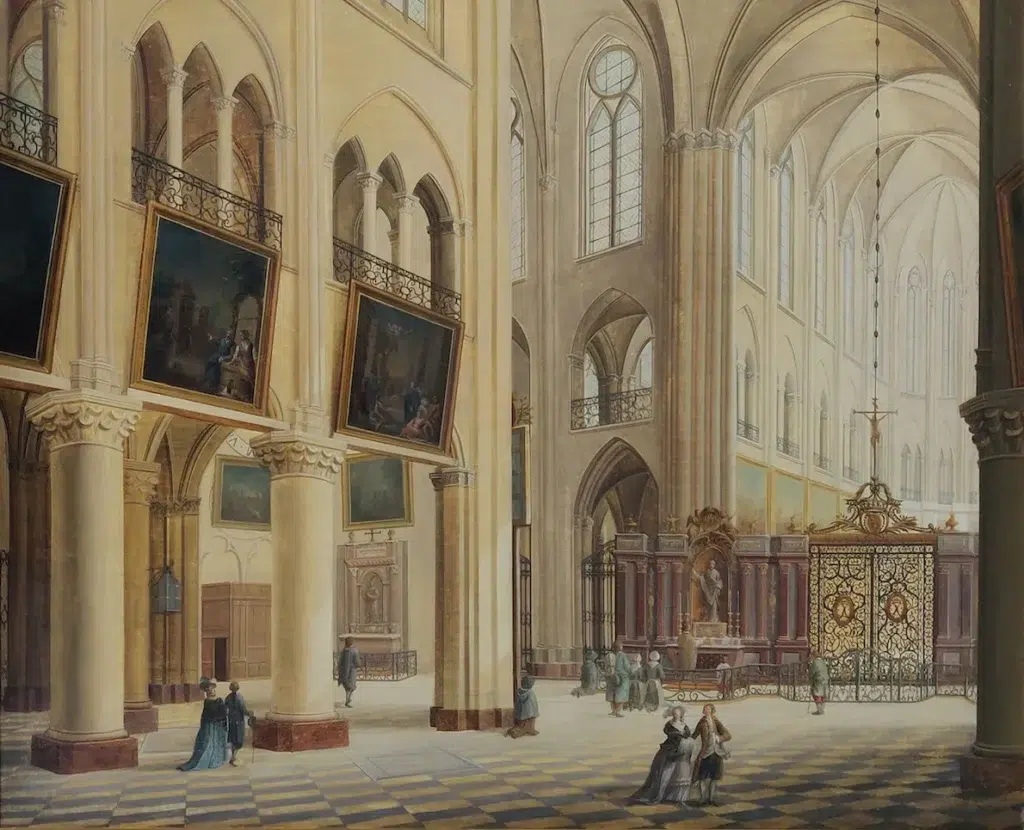
The Mays can be seen hanging in the cathedral from a height of several meters.
During the Revolution, these Mays were removed and sent to museums or other churches. In 1802, they were returned to Notre-Dame before being sent to the Louvre by Viollet-le-Duc, who was seeking to give the cathedral a medieval style.
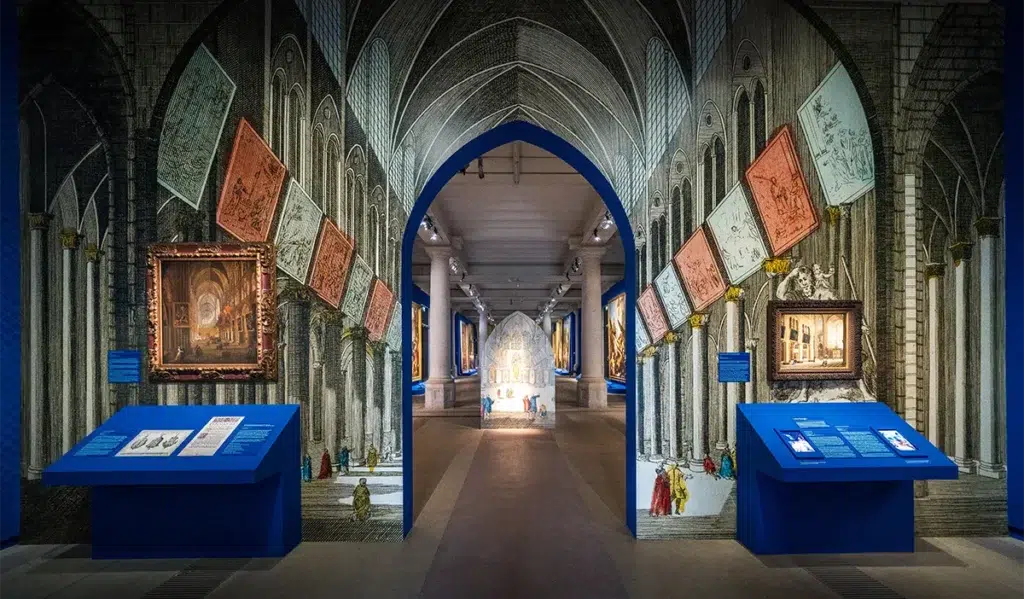
Today, 52 of the 76 Mays are in museums and churches. 13 of them were in Notre-Dame at the time of the fire, and were fortunately spared and removed from the cathedral in the days that followed, before being restored by the DRAC (Direction régionale des affaires culturelles) d’Île-de-France.
The exhibition organized by the Mobilier National presents these 13 Mays side by side, at eye level. A unique opportunity to contemplate them in this way.
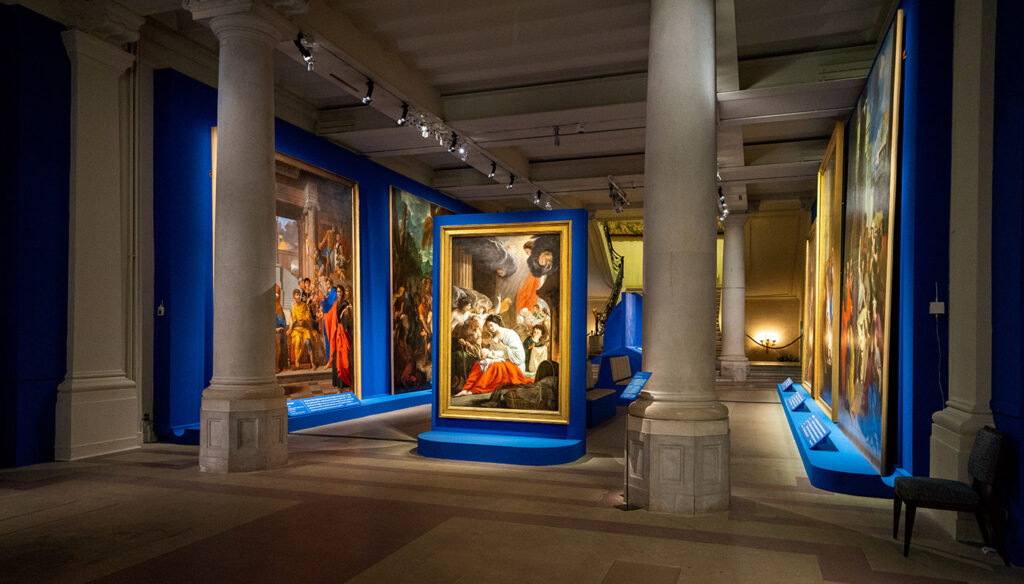
A similar construction
Have you noticed? Each May is built in the same way, with a very colorful foreground in the lower part of the picture and a more common background in the upper part.
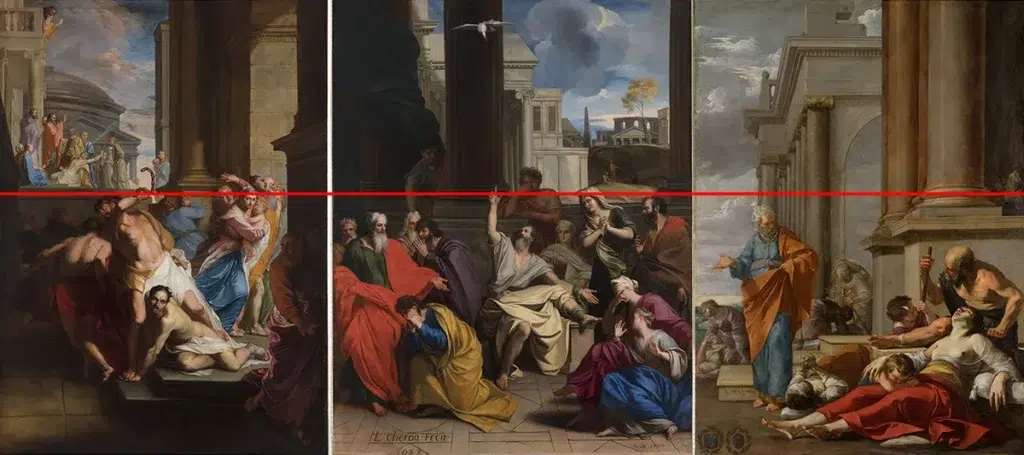
Several touch screens also allow visitors to see the condition of the paintings before and after restoration.
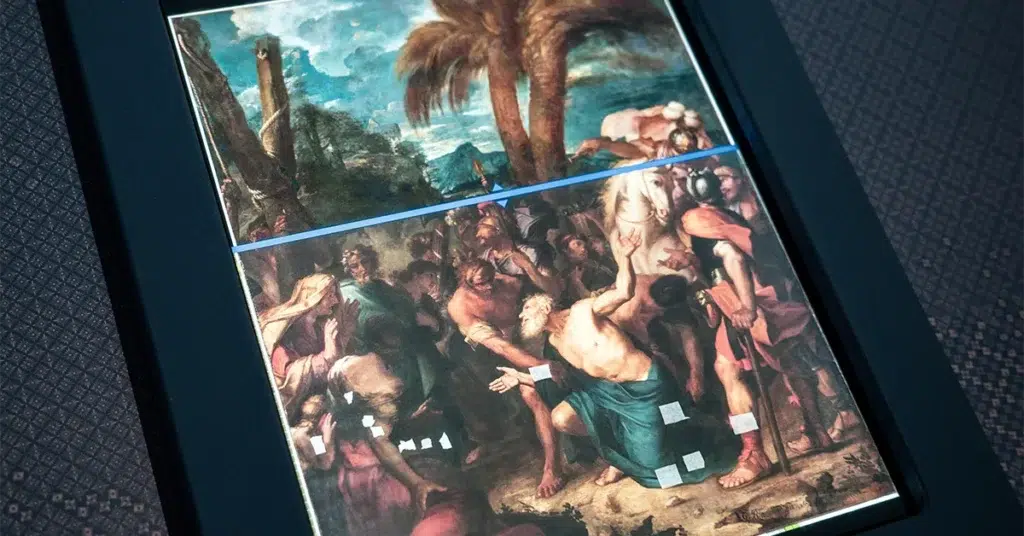
Notre-Dame choir carpet
Another masterpiece to be seen in the exhibition is the Notre-Dame choir carpet.
In 1825, Charles X commissioned the Manufacture de la Savonnerie to produce a monumental 30-meter-long carpet with religious and monarchical iconography. Five years later, while the carpet was still under construction, the revolution of 1830 brought Louis-Philippe to power, and he asked the Manufacture to remove the monarchical symbols.
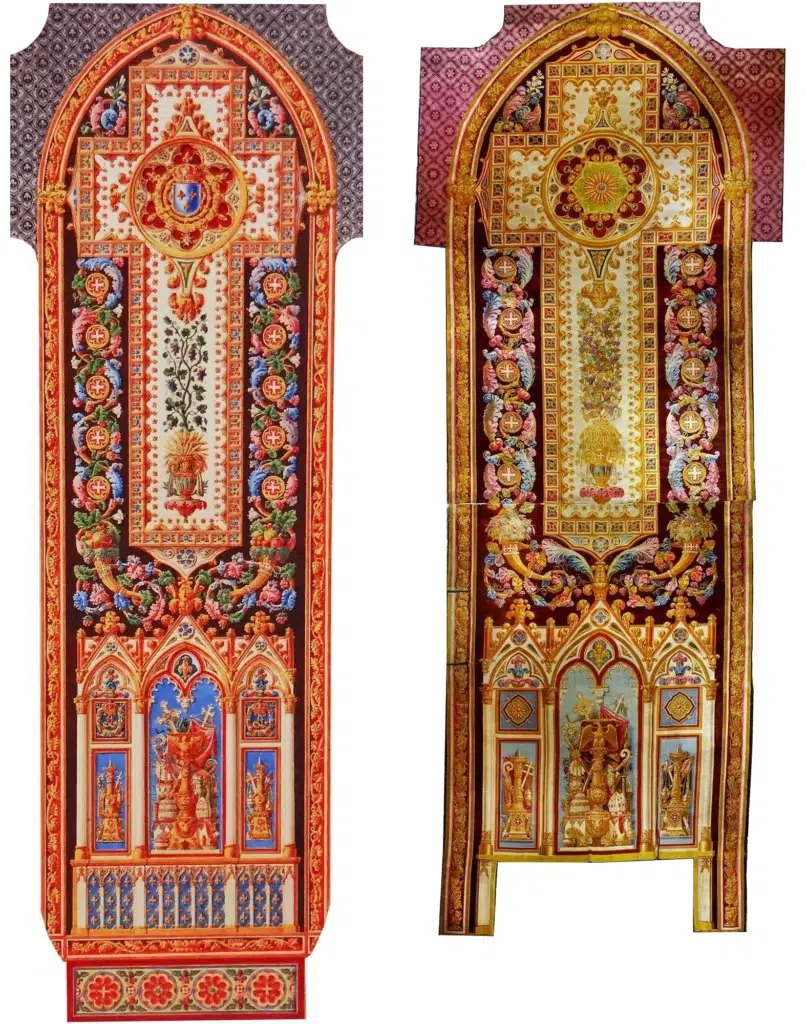
Strange coincidences!
The carpet was modeled by Jacques-Louis de la Hamayade de Saint-Ange and transposed into paint by Charles-Adrien Devertu. Two aptly named artists to work on such a religious work!
The carpet was then reworked, completed in 1833 and initially displayed in the Galerie d’Apollon in the Louvre. In 1841, Louis Philippe finally donated it to Notre-Dame Cathedral in Paris for the wedding of his grandson, the Comte de Paris.
Because of its size and weight, the carpet was only used on rare occasions, such as the wedding of Napoleon III in 1853, the visit of Tsar Nicholas II in 1896, and the visit of John Paul II in 1980. The rest of the time, the carpet was kept rolled up in a crate.
Following the cathedral fire, the carpet was dried and vacuumed. It was discovered to be infested with moths. Thanks to the substantial donations received for the cathedral’s restoration, the DRAC Île-de-France was able to commission its restoration by the Mobilier National’s re-upholstery workshop.
A restored half of this remarkable carpet is presented in the exhibition. The other half is currently being restored.
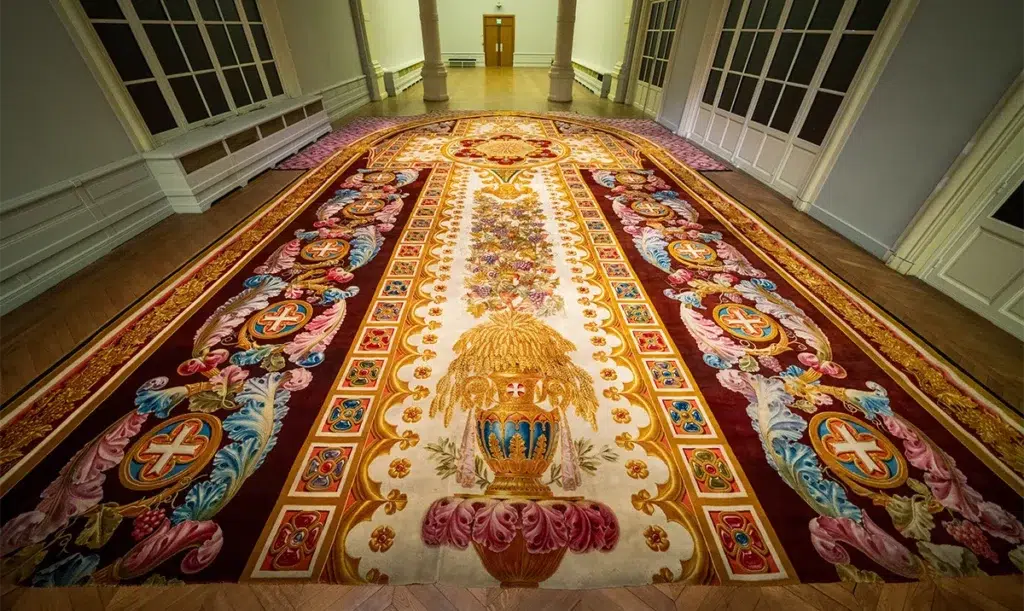
The hanging of the life of the Virgin Mary
Between 1638 and 1657, fourteen tapestries depicting the life of the Virgin Mary were woven for the Notre-Dame de Paris choir. In 1739, following the refurbishment of the cathedral choir, these tapestries were put up for sale and acquired by Strasbourg Cathedral, which now owns them.
To coincide with the exhibition, Strasbourg Cathedral has agreed to lend these tapestries to the Mobilier National, marking their return to Paris for the first time since their sale. For conservation reasons, these tapestries are presented in a rotation of seven tapestries: from April 24 to June 9, then from June 11 to July 21.
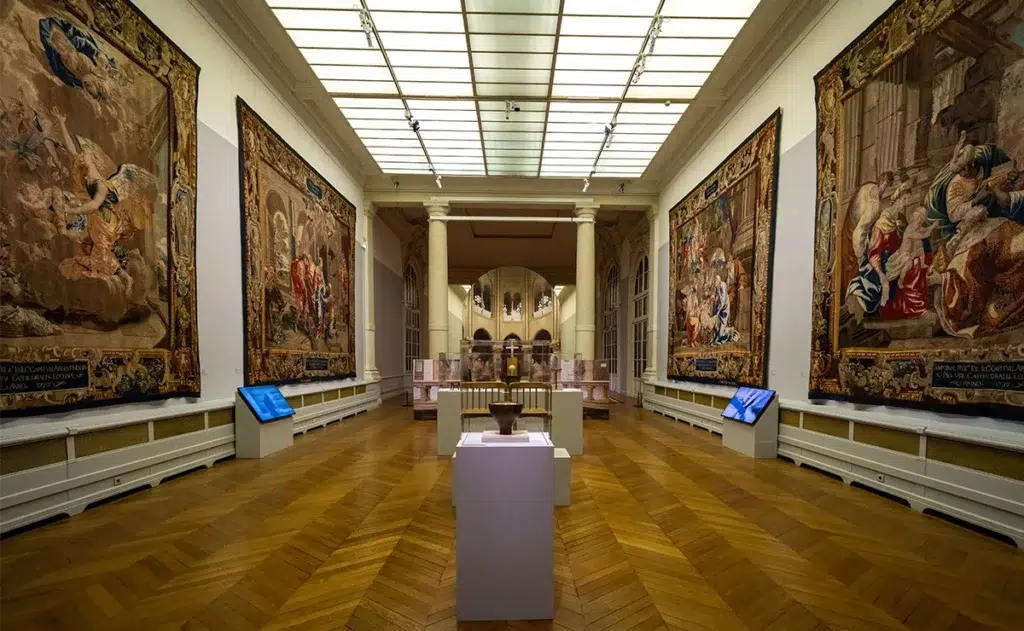
Contemporary liturgical furniture
When Notre-Dame de Paris reopens, the Mays and the choir carpet will return to the cathedral. They will be accompanied by new liturgical furnishings to replace the old ones, which were largely destroyed in the fire.
The exhibition showcases some of these contemporary pieces, including the new solid oak chairs by designer Ionna Vautrin.
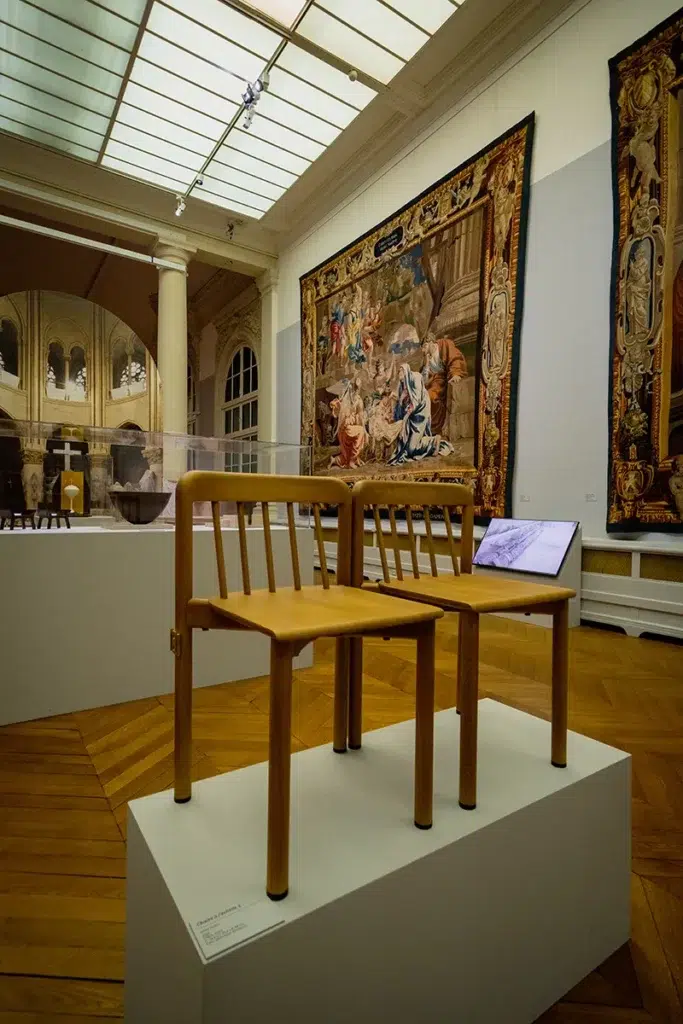
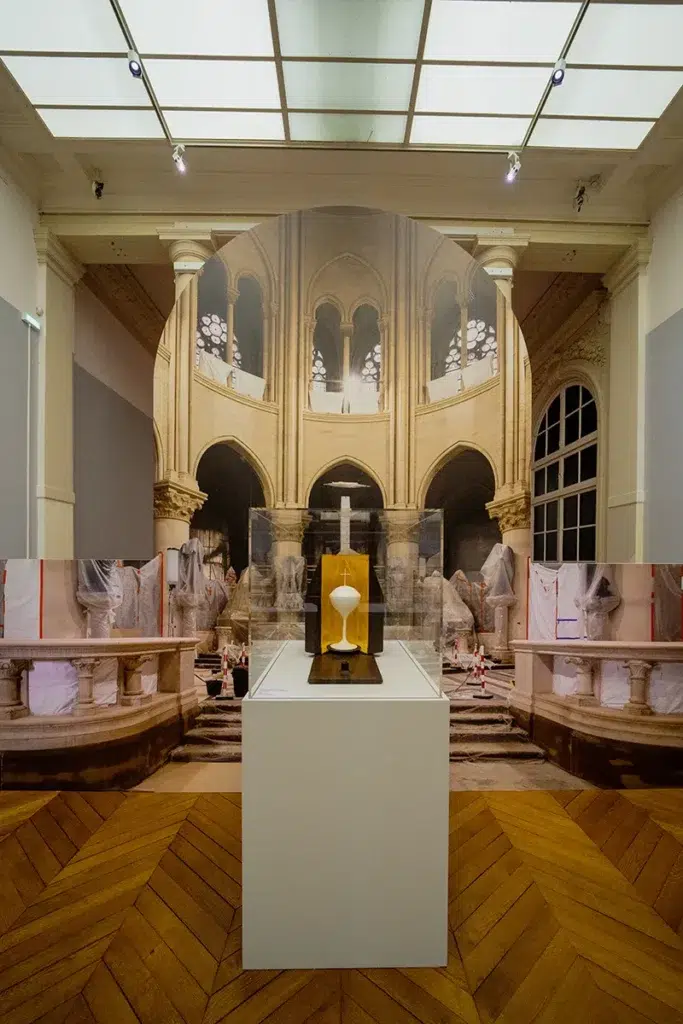
Visit the Mobilier National until July 21 to discover this exhibition!
Practical information
Address :
Galerie des Gobelins
42 avenue des Gobelins
Paris 13th arrondissement
Opening hours :
Until July 21, 2024
Tuesday to Sunday, 11 am to 6 pm
Website :
mobiliernational.culture.gouv.fr
Prices :
Full price: €8
Reduced rate: €7 for students
Free for under-26s and jobseekers
Article produced in collaboration with Mobilier national
Many thanks to Antonin Macé-de-Lépinay for his fascinating explanations

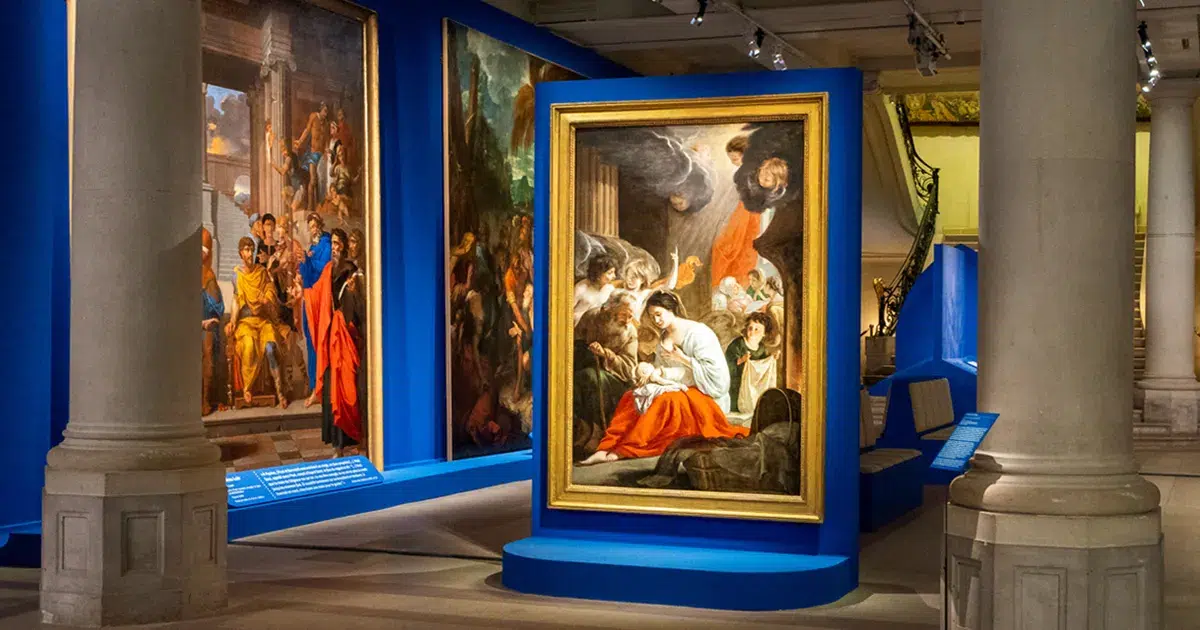



No Comments
Leave a comment Cancel